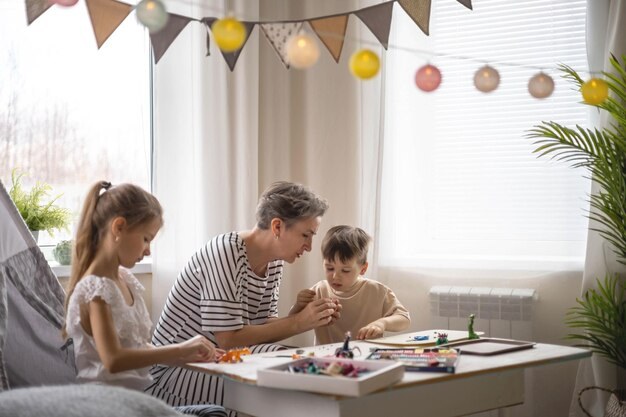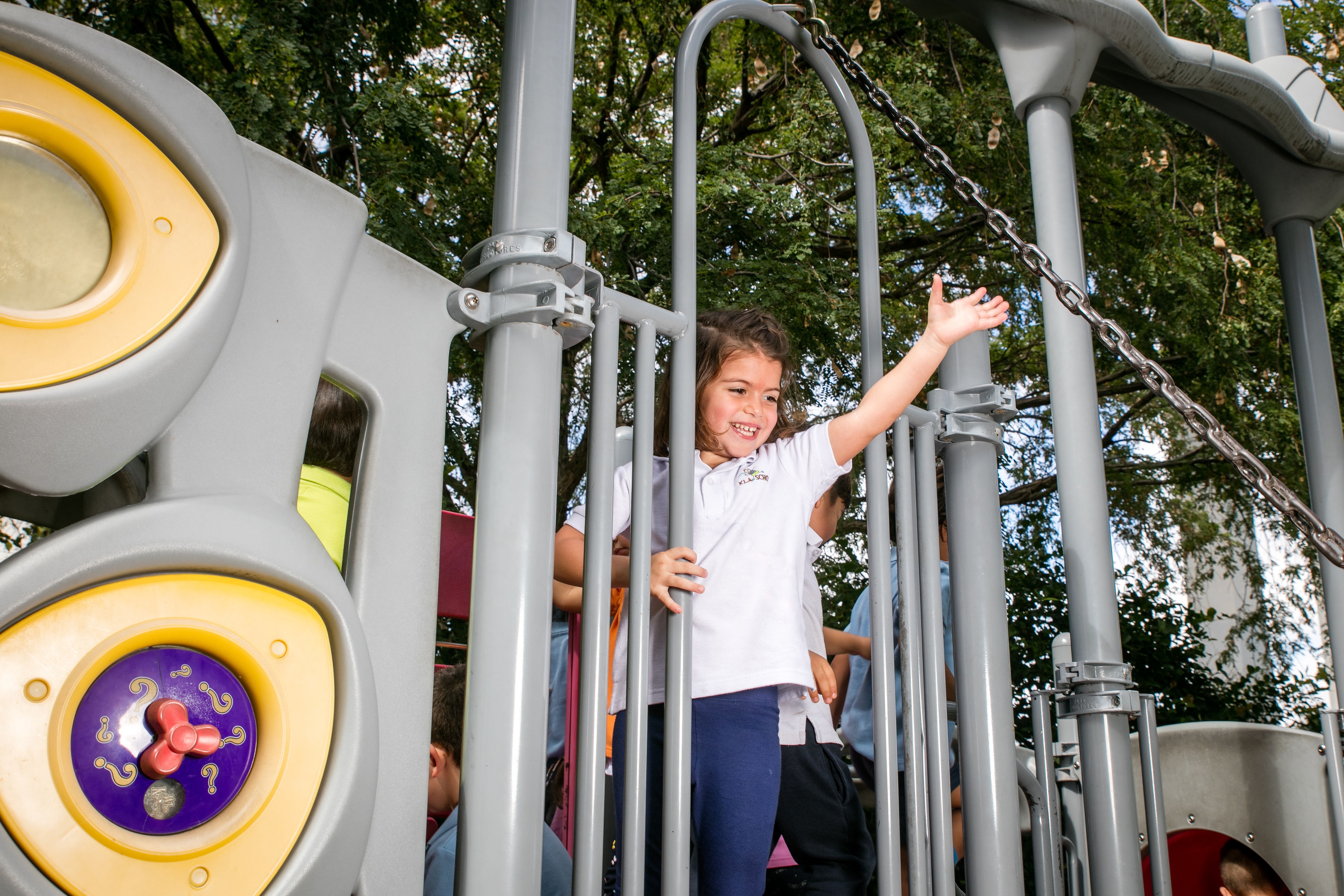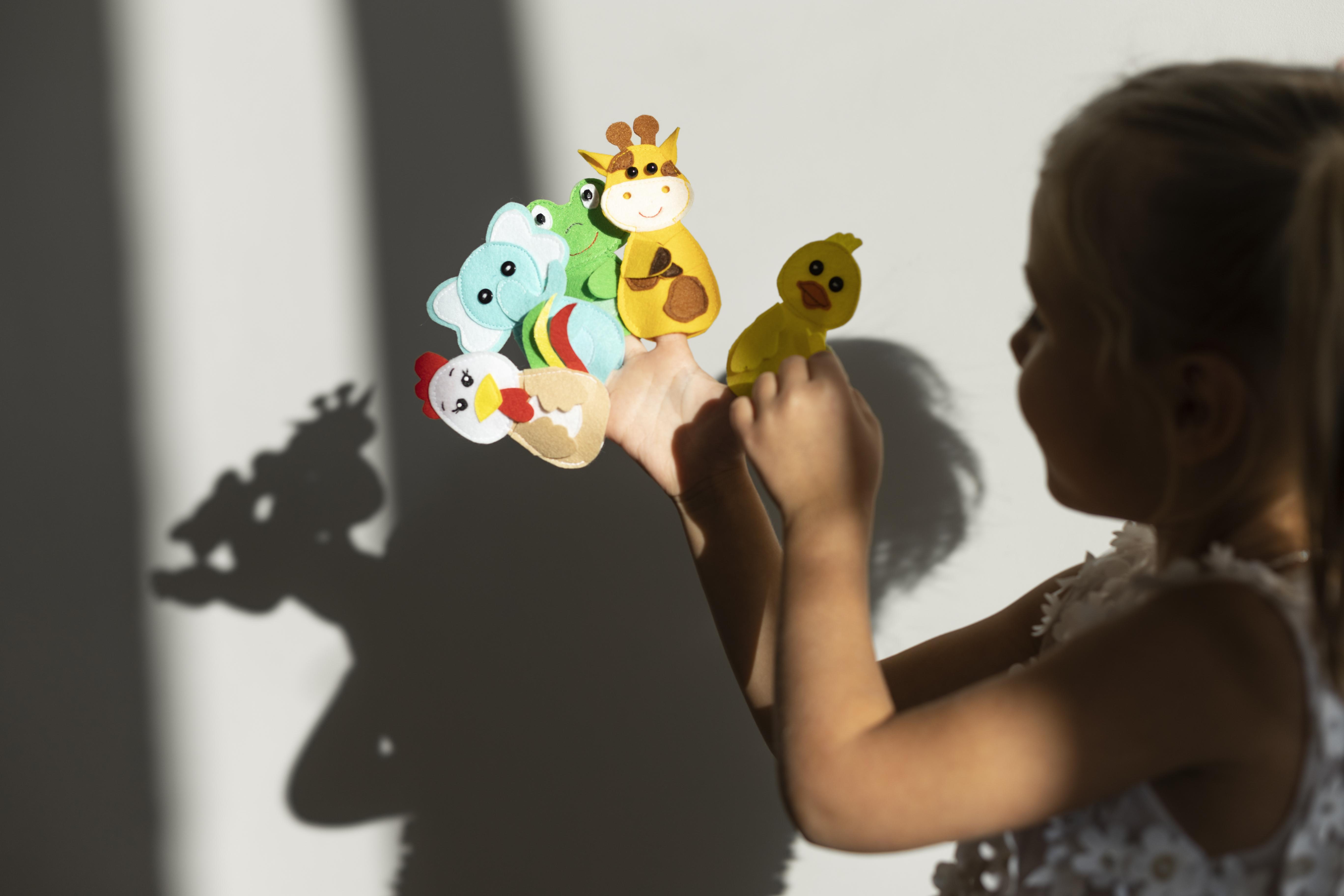Toddler Imaginative Play: Key to Cognitive and Social Growth
Topics: Child Development
Age Range: Preschool
The toddler years mark a critical stage in child development. Between the ages of one and three, children undergo rapid changes in motor skills and language, as well as their ability to think creatively and relate to others. These early experiences shape the cognitive frameworks they will rely on for the rest of their lives. At the heart of this developmental journey lies a powerful tool often underestimated: imaginative play.
A toddler's imaginative play is much more than cute pretend games. In the context of early childhood education, it’s a transformative process that fuels mental flexibility, emotional insight, and interpersonal understanding. When toddlers immerse themselves in make-believe scenarios—pretending to cook dinner, talking to invisible friends, or turning a block into a phone—they enjoy essential learning experiences. These activities help build critical neural pathways and provide foundational social tools, reinforcing the core goals of early childhood education.
Understanding the Onset: When Does Imaginative Play Start?
The emergence of imagination begins subtly. Around 18 months, toddlers start mimicking adult behaviors with symbolic gestures, like holding a toy to their ear as a phone. This marks the early stages of pretend play. The question “When does imaginative play start?” often leads to the age of two, when imaginative play becomes more elaborate. At this stage, toddlers begin assigning roles, inventing narratives, and using one object to represent another.
By age three, most children comfortably shift between reality and make-believe. Their stories become more complex, and they engage in role-play with peers, which helps them practice negotiation, empathy, and language skills.
Cognitive Advantages Rooted in Imaginative Exploration
When a toddler pretends, their brain engages in various high-level tasks. Imaginative play for toddlers boosts executive functioning—a set of cognitive processes that include working memory, attention control, and problem-solving.
Pretend scenarios demand that children keep track of roles, remember what happened in the “story,” and shift between different perspectives. These mental exercises are entertaining and strengthen neural connections vital for academic and emotional success later in life.
Additionally, creative thinking flourishes during these activities. Children develop flexible thought patterns when they transform simple household items into fantastical objects or invent new rules in a play scenario. This kind of divergent thinking is foundational for innovation and adaptability in adulthood.
Social and Emotional Gains Through Make-Believe
Engaging in pretend play provides toddlers with a platform to explore feelings and social situations in a low-risk environment. Role-playing teaches emotional regulation, allowing children to process experiences like anger, fear, or joy through their characters.
When two toddlers pretend to be doctors and patients, they must listen, take turns, and understand each other's perspectives. These skills form the foundation of emotional intelligence. Over time, toddlers who engage regularly in imaginative play tend to show greater empathy, cooperation, and conflict-resolution abilities.
Furthermore, children often reenact experiences they’ve witnessed, like a trip to the grocery store or a visit to the doctor. This rehearsal helps them process real-life events and understand how the world works, deepening their sense of security and comprehension.
Everyday Examples of Imaginative Play in Toddlers
Recognizing and supporting imaginative play means understanding what it looks like in day-to-day life. Here are typical examples of pretend play in a 2-year-old:
- Using a spoon as a microphone while "performing" a concert.
- Feeding a doll and mimicking parental speech.
- Pretending to be a firefighter rescuing stuffed animals.
- Turning a cardboard box into a spaceship or a castle.
- Hosting a tea party with invisible guests and stuffed animals.
These instances are more than simple games. They reflect cognitive growth, emotional exploration, and a budding understanding of social structures.
Curating an Environment That Nurtures Creative Play
Fostering creative play for toddlers doesn’t require expensive toys or structured activities. Children need time, space, and permission to explore their imagination freely.
Set aside open-ended playtime daily for children to engage in self-directed play. Provide simple, multipurpose items like fabric scraps, wooden blocks, kitchen utensils, and non-toxic art supplies. Avoid overstimulating environments filled with loud, fast-paced electronic toys, which can often limiting creativity.
An inviting play space should encourage storytelling, experimentation, and movement. Allow toddlers to make a mess, explore textures, and express their ideas without interruption. This unstructured time is essential for brain development and self-discovery.
Selecting the Right Tools: Imaginative Play Toys for Toddlers
While toddlers can turn nearly anything into a prop, some toys are particularly effective in stimulating imagination. The best imaginative play toys for toddlers include:
- Dolls and figurines for role-playing.
- Toy kitchens and pretend food.
- Costumes and accessories for dress-up.
- Building blocks and magnetic tiles.
- Puppet theaters or hand puppets.
- Toy vehicles and tool sets.
Avoid toys with a single, defined function. The more ways a toy can be used, the more likely it is to inspire imaginative thinking.
Supporting Imagination Through Adult Engagement
Adults play a vital role in nurturing imagination, not by directing play, but by participating and responding to the child’s cues. Knowing how to encourage imaginative play involves stepping into their world without taking control.
Ask open-ended questions like, “What’s happening in your story?” or “Who lives in this house you built?” Join when invited, taking on roles or expanding the narrative based on your toddler’s lead. Validate their ideas, even when they seem fantastical. This mutual engagement builds trust and reinforces the value of creativity.
Be mindful of over-scheduling. Constant activities or lessons can rob children of the time they need to invent, wander, and create. Boredom, in small doses, often sparks the richest imaginative play.

Imagination as a Pathway to Language and Literacy
Pretend play nurtures the roots of literacy. When toddlers narrate stories, assign dialogue to their characters, or organize a sequence of events, they practice narrative structure. These are the very skills they’ll later use in reading and writing.
Moreover, imaginative play expands vocabulary. A child pretending to be a chef might learn words like “ingredients,” “recipe,” or “oven,” which they might not encounter in everyday conversation. Role-play also introduces sentence structure, dialogue, and expressive language.
Toddlers who engage regularly in storytelling through play are better prepared for classroom communication and literacy development demands.
A Long-Term Investment in Human Potential
The benefits of toddler imaginative play are not fleeting. Children who grow up with rich, creative experiences often become more independent thinkers, resilient problem-solvers, and empathetic collaborators. In a world increasingly shaped by automation and artificial intelligence, these human-centered skills are becoming more valuable than ever.
Creative exploration in early childhood lays the groundwork for innovation, empathy, and adaptability—all key traits for success in a rapidly evolving society. It’s no exaggeration to say that the pretend tea party on the living room floor may be shaping tomorrow’s scientists, artists, and leaders.
Encouraging Imagination Beyond the Early Years
Although toddlerhood is a golden age for imaginative development, the need for creativity doesn’t stop at age three. As children grow, the themes of their play evolve, but the benefits remain.
Parents and educators can extend this foundation by introducing storytelling games, encouraging role-play with peers, and incorporating creative thinking into everyday activities like cooking or gardening. Once nurtured, the habit of imagination becomes a lifelong tool.
Unlocking Growth Through the Power of Pretend
Toddler imaginative play is not a frivolous pastime but a core driver of cognitive development and social learning. Through playful scenarios and invented worlds, toddlers naturally, joyfully, and empoweringly practice real-world skills. Their minds expand, their relationships deepen, and their creative ability blossoms.
As caregivers, creating space for this type of play and valuing its impact is one of the most impactful contributions we can make to a child’s future.
How KLA Schools Cultivates Imagination as a Pillar of Early Childhood Development
KLA Schools recognizes the profound value of imaginative play in the early years and designs learning environments that reflect this belief. Our Reggio Emilia-inspired approach embraces creativity as a fundamental part of the learning process, offering toddlers the time, space, and materials to bring their ideas to life.
Teachers at KLA Schools serve as co-learners and facilitators, encouraging curiosity, storytelling, and expressive thinking. Students develop cognitive and language skills, emotional intelligence, and social awareness through child-led play. Imaginative play isn’t just an activity—it’s a foundation for growth, and at KLA Schools, it’s honored as such every day. Contact us today and see how we turn play into powerful learning.

